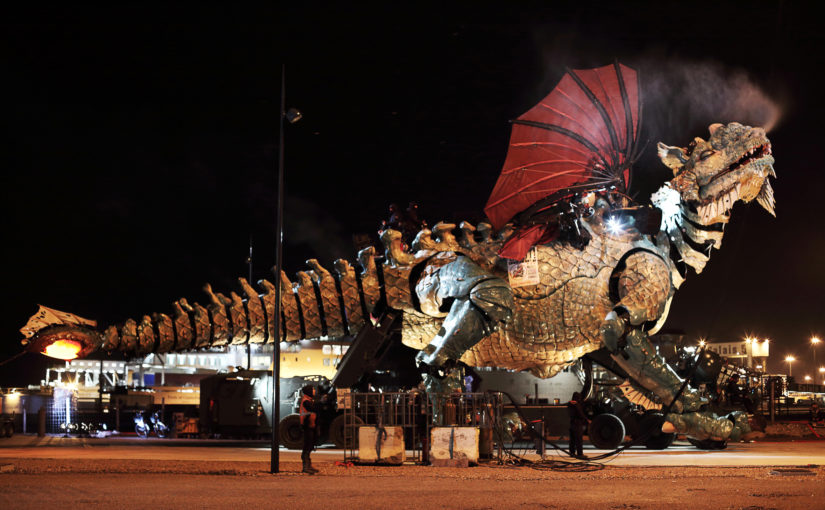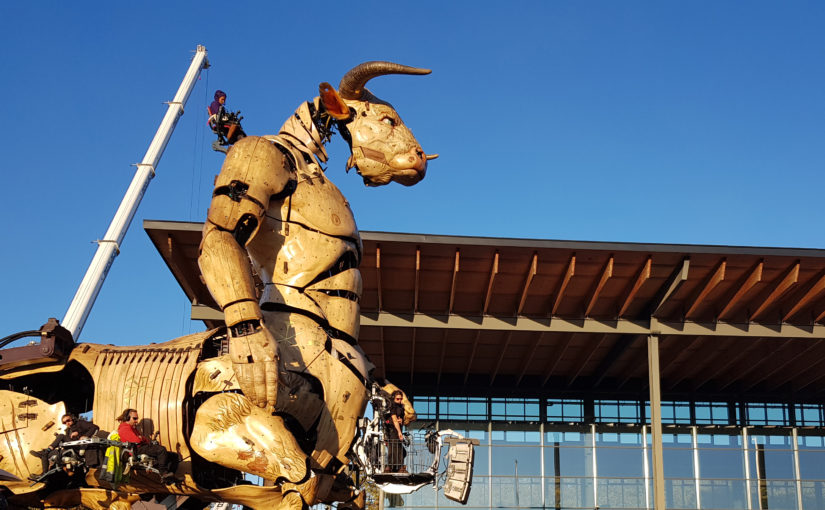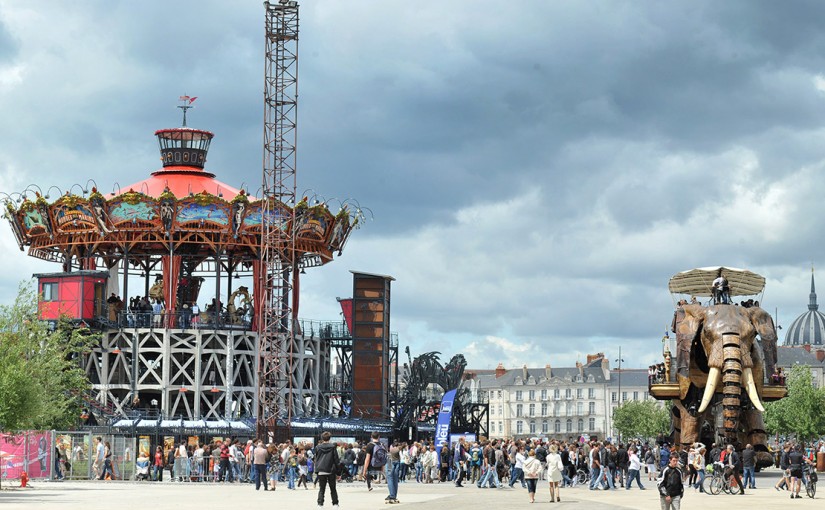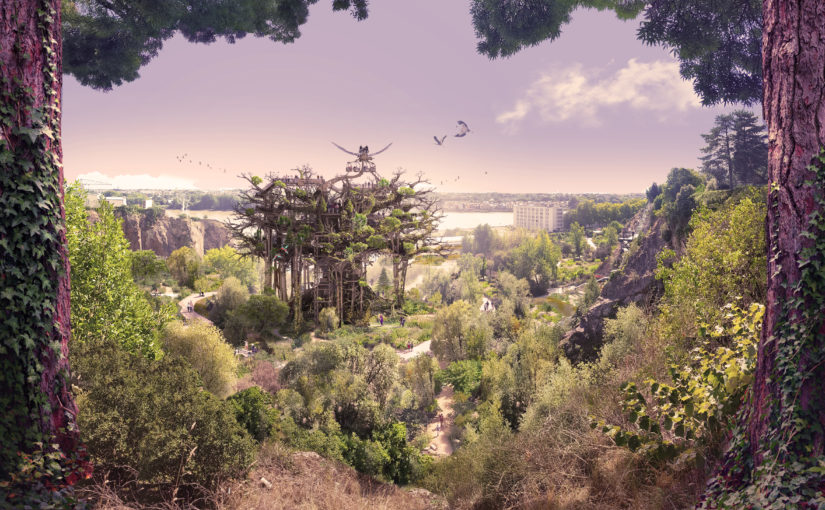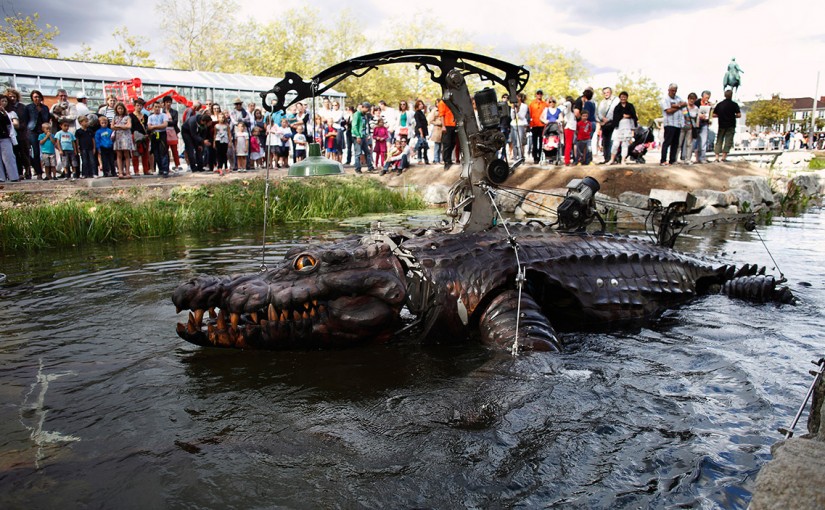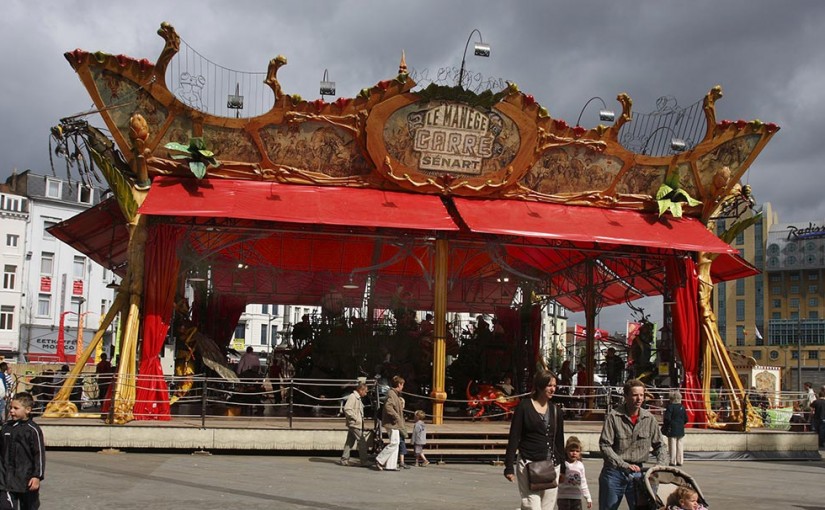Le Dragon de Calais is a perennial creation which accompanies the rehabilitation of the seafront of the city of Calais. This saurian is thought to be a structuring element of the city. Through its movements, it meshes the city and interacts with the inhabitants and visitors. The aim is to create a collective and unifying imaginary heritage around this machine. It is the first stage of a three-phase project which will accompany the urban transformation of Calais for eight years and which will give birth to a family of saurians.
A monumental construction in steel and sculpted wood, the Dragon de Calais has a mobility inspired by the motor skills of reptiles. It is very expressive, spitting fire, smoke and water in different forms. Mist escapes from its body through about thirty vents. Its eyes, eyelids, ears, mouth, tongue and fins are mobile. He can lie down, get up, run up to 4 km/h and flap his wings in thick canvas. Outside the shows, 50 passengers will access its back on a covered terrace thanks to a staircase integrated into its tail.
From 17 December 2019, the Compagnie du Dragon will ensure the tourist, commercial and technical exploitation of the Dragon de Calais and its companions when they arrive on the territory. Each day, the Dragon de Calais will walk along the seafront carrying 50 people on its back for a journey of about 30 minutes. Technical visits, a restaurant or a shop will enrich this cultural and tourist offer.
Information and booking : www.compagniedudragon.com
Dragon’s identity card
Height : 8 m
Width: 7 to 22 m
Length: 25 m
Weight: approx. 72 tons
Speed: 0 to 4 km/h
Fluids: water, air, electricity, hydraulics
Materials: wood, metal, leather, canvas, copper
Effects: breathing, smoke, flame, water jet, sound
Handling: 4 to 17 people (show)
Capacity: 50 people transported
Hybrid propulsion




